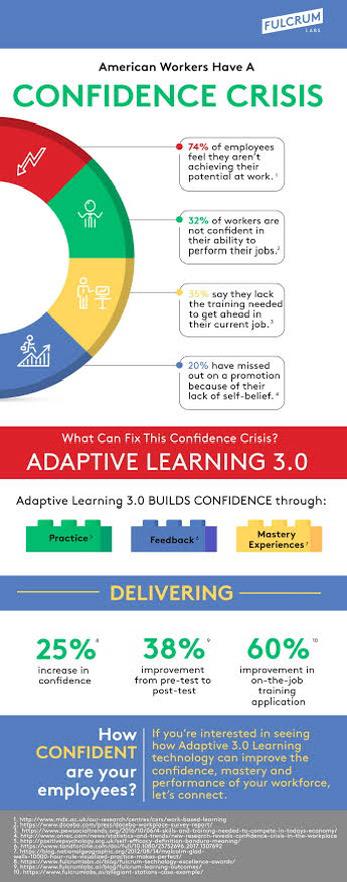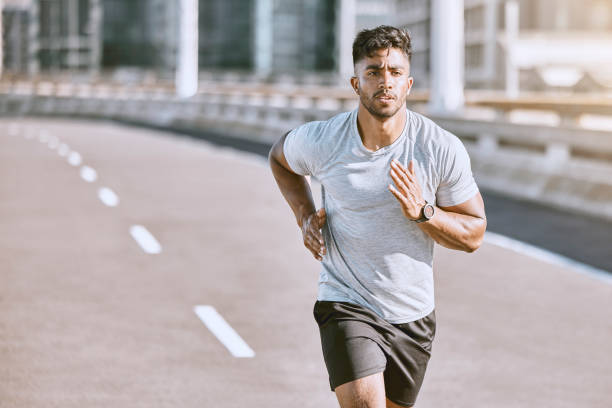The Confidence Illusion
At a school debate, two students wait backstage. Reema looks calm, but inside, her heart races with anxiety. Aarav leans casually, smiling and chatting, seeming confident. Yet beneath his ease, he too battles a quiet panic.
This scene plays out everywhere be it in classrooms, auditoriums, or offices. People often appear confident but silently battle doubt and fear. Society tells us to fake it till we make it, believing that outward performance leads to genuine belief. But that approach often deepens anxiety instead.
What if real confidence isn’t loud or forced, but quietly rooted in inner calm? True self-belief begins not with acting but with awareness -starting with something as simple, yet powerful, as the breath. Through mindfulness, we can build a steady, authentic self confidence—without faking it.
Breaking the Myth of Fake Confidence
One of the most common pieces of advice we hear is, “Just act confident, and eventually you’ll become confident.” “Fake it till you make it” sounds simple enough right? Stand tall, smile, speak loud, and own the room. But when has reality ever been that simple? While “faking it” might help in the short term, it often leaves people drained and disconnected.
Beneath the surface, many feel like imposters, more anxious, less sure of themselves. The performance becomes exhausting, not empowering. That’s because confidence isn’t about pretending or putting on a show. When we act confident without truly feeling it, our body and mind clash. This inner-outward mismatch creates tension.
Even if you seem calm, your brain registers fear and reacts with more anxiety. It’s not sustainable, because your nervous system doesn’t lie. Real confidence starts from within, from a sense of internal safety and calm. It’s not about loudness or dominance, but clarity and steadiness. You feel confident when your body, breath, and thoughts are in sync. Not when you’re forcing yourself to be someone you’re not. True confidence flows when the nervous system is balanced and your breath is free. Instead of trying to act confident, shift focus to being calm and grounded.

True self confidence can be build through mindfulness. That’s where mindfulness and breathwork become powerful tools. Making confidence real, not rehearsed.
The Science of Breath: From Fear to Safety
When we feel nervous or threatened, our body’s nervous system instantly kicks into a survival mode known as the “fight, flight, or freeze” response. This is controlled by the sympathetic nervous system, which prepares us to react quickly to danger. Our heart rate speeds up, muscles tense, and breathing becomes rapid and shallow.
While this response is crucial in life-or-death situations, it often gets triggered unnecessarily which all of us have experienced at some point. Be it before a presentation, a test, or a social interaction. This heightened state floods the body with stress hormones, making it harder to think clearly or communicate confidently.
But here’s where the magic of breath comes in. Breath is unique because it is both involuntary and voluntary. Our body breathes automatically, but we also have the power to control it consciously. This gives us a direct way to influence our nervous system.
By slowing down and deepening our breath, we activate the parasympathetic nervous system, often called the “rest and digest” system. This system calms the body, lowers heart rate, relaxes muscles, and reduces stress hormones. Deep, controlled breathing sends signals to the brain that it’s safe — switching the body out of survival mode and into a state of calm readiness.
For example: taking slow deliberate breaths before speaking or performing helps to reduce the symptoms of anxiety. It also clears a mental fog, making it easier to focus and respond naturally. This powerful link between breath and the nervous system means that confidence isn’t just a mindset but also a physical state we can influence.
Posture, Breath & Feeling vs. Looking Confident
We often hear advice like “stand tall,” “keep your shoulders back,” and “hold your head high” to appear confident. While good posture does impact how others see us, what’s even more important is how posture affects how we feel inside. Confidence isn’t just about putting on a show; it’s about creating a physical state that supports calmness and self-assurance.
When we slouch, hunch over, or collapse our chest, our breathing becomes shallow and restricted. The lungs don’t expand fully, and the diaphragm -the main muscle that controls breathing- tightens up. This physically signals to our brain that something is wrong, which can trigger stress responses.
Even if you try to “fake it” by standing straight but hold your breath or tense your body, the nervous system still senses danger. That’s why simply “looking confident” without tuning into how your body actually feels doesn’t create real confidence.
On the flip side, aligning your body in an upright yet relaxed posture naturally encourages deeper, slower breaths. When your chest is open and your spine straight, your lungs have more room to expand fully. This helps activate your parasympathetic nervous system -the branch responsible for rest and relaxation- which calms the mind and body.
This alignment between posture and breath creates a feedback loop. When your breath deepens, your muscles relax. When your muscles relax, your posture becomes more open. And when your posture and breath are in sync, your mind feels steadier and clearer.
True confidence comes from this embodied presence, where your physical state supports your mental state. It’s not about striking a pose for others to admire, but about feeling grounded and safe in your own body. When posture and breath work together, your confidence is authentic, and felt from within.
Mindfulness: Quieting the Mental Noise
Mindfulness is more than just a trendy buzzword. It’s a powerful practice that helps us clear the mental clutter that blocks our path to real confidence. True mindfulness means paying deliberate attention to the present moment, without distraction. It’s about noticing what’s happening inside and around us, instead of getting lost in a spiral of thoughts or worries.
Why does this matter for confidence? Because most of the time, what holds us back isn’t a lack of skill or ability, but the mental noise inside our heads. Endless thoughts like “What if I mess up?” “They’re all better than me” “What if I make a fool out of myself?” create a fog that clouds our self-trust.
These thoughts are reactions- an old pattern stemming from fears and doubts that don’t reflect reality but feel very real in the moment.
Mindfulness helps by shining a light on this noise. When you practice being mindful, you start to notice your thoughts without immediately reacting to them. You develop what psychologists call meta-awareness -the ability to see your thoughts as passing events rather than fixed truths. This subtle but profound shift means you no longer get swept away by self-criticism or anxiety. Instead, you can gently observe these feelings and let them go.
Imagine standing by a busy highway with a lot of noise. Mindfulness is like stepping off the road onto a quiet path. You don’t try to stop the noise, but you choose to focus on the calm instead. This mental clarity creates the space where true self-belief can grow. It allows you to respond thoughtfully, rather than react out of fear or habit.
In everyday life, mindfulness can be as simple as focusing on your breath, noticing the sensation of your feet on the ground, or listening carefully to the sounds around you. With regular practice, the mental static fades, and a calm, clear confidence emerges — quietly but powerfully.
Confidence in Action: Calm Body, Clear Voice
True confidence shows up not just in what you say but how you say it. And that starts with a calm, grounded body. When your nervous system is balanced, your voice naturally becomes clearer, steadier, and more engaging. You don’t need to force yourself to speak loudly or fast; instead, your words flow effortlessly because you’re present and relaxed.
Think about the students you admire —the ones who don’t necessarily shout the loudest, but who capture attention with quiet assurance. Their posture is open but not rigid, their breathing steady, and their eye contact natural. This calm presence signals to both themselves and others that they are comfortable in their own skin.
On the flip side, when nerves take over, speech tends to become rushed or shaky. The body tightens, making it harder to take deep breaths, which results in a voice that sounds strained or uncertain. This, in turn, feeds back into anxiety, creating a loop that’s tough to break.
Learning to stay emotionally calm transforms this experience. Mindfulness and breath work help regulate your nervous system, which lets you approach any interaction grounded rather than reactive. This grounding gives you a stronger platform to express yourself authentically. You don’t have to perform or pretend; you simply are.
Ultimately, confidence isn’t about dominating the room. It’s also about owning your space with quiet strength. When your body and mind align, your natural clarity and presence do the rest.
Practice Tool: 3 Deep Breaths Before Speaking
When nerves hit, be it before a presentation, walking into a social gathering, or speaking up in class—a simple, mindful breathing exercise can be your secret weapon. It’s quick, effective, and can be done anywhere, anytime, without anyone noticing.
Here’s the step-by-step practice:
Pause. Stop what you’re doing for a moment. Even a brief pause creates space to reset your mind and body.
Inhale slowly through your nose for a count of four. Feel the air fill your lungs, expanding your belly and chest gently.
Exhale fully through your mouth for a count of six. Let go of tension as you breathe out, releasing tightness from your shoulders and jaw.
Repeat this cycle three times. Focus your attention on the sensation of breathing. The rise and fall, the feeling of cool air entering your lungs, and the warmth leaving.
This practice activates your parasympathetic nervous system -the part responsible for rest and relaxation. It calms your heart rate, lowers stress hormones, and quiets the mind’s chatter. Try this anytime before stepping into high-pressure situations like presentations, competitive sports, or even meeting new people.

Over time, this simple ritual becomes a powerful anchor, helping you show up grounded, clear, and truly confident, without faking it.
Success Story: Priya’s Transformation
Priya was a typical 16-year-old student who dreaded class presentations. Every time she stood in front of her classmates, her heart would race, her palms would sweat, and her mind would go completely blank. She felt frozen, overwhelmed by the pressure to perform perfectly. Despite rehearsing her speeches, she struggled to connect with her audience and often rushed through her words. To her, confidence seemed like something other people naturally had, something she lacked.
Everything began to change when Priya attended a mindfulness workshop at her school. The instructor introduced simple breathing exercises and mindful awareness practices to help students manage stress. Skeptical but willing to try, Priya started practicing three deep breaths before speaking and spent a few minutes daily sitting quietly, focusing on her breath.
Within the span of two weeks, Priya noticed a remarkable shift. The moments of panic began to fade. During her next presentation, she took a deep breath before stepping onto the stage. Though nerves were still there, they no longer controlled her. She spoke slowly, made eye contact, and even smiled at her classmates.
For the first time, she felt grounded, authentic, as if she belonged in that room amongst her peers. Reflecting on her experience, Priya said, “Confidence isn’t about being perfect or pretending to be fearless. It’s about calming my mind and trusting myself enough to just be real.” Her journey shows that real confidence is built quietly and how self confidence can be build through mindfulness. One breath at a time.
Real Confidence Is Quiet, and It’s Built
In a world that often celebrates boldness, loudness, and showmanship, it’s easy to assume that confidence means being the loudest voice in the room or the one who never doubts themselves. But the truth is far more subtle—and far more powerful.
Real confidence doesn’t need to be performed. It doesn’t rely on a script to hide vulnerability. Instead, it is a quiet, steady presence that grows from within. It is the calm voice that speaks up not to prove anything, but because it trusts what it has to say. It’s the grounded posture that stands tall not to intimidate others but to feel balanced in one’s own skin.
This kind of confidence is not something we’re simply born with. It’s not a gift handed out randomly. It’s a skill, that is developed with practice, patience, and awareness. The good news? Anyone can build it.
Mindfulness is the key that unlocks this inner self-belief. By tuning into our breath, calming our nervous system, and quieting the mental noise that feeds doubt, we create space to discover our true selves. We begin to trust ourselves more deeply, which naturally translates into clearer speech, stronger presence, and authentic connections.
So next time you feel nervous or uncertain, remember: confidence is not about faking it. It’s about feeling calm enough to be real. It is a lifelong practice that grows every time you choose presence over performance. And that is the true confidence code.
FAQ’s on The Confidence Code: How Mindfulness Builds Real Self-Belief Without Faking It
What is real confidence?
Real confidence is an inner sense of calm and self-trust that isn’t based on pretending or faking. It comes from feeling safe and present in your own body and mind.
How is mindfulness related to confidence?
Mindfulness helps reduce mental noise and anxiety by encouraging present-moment awareness, which builds a steady foundation for genuine confidence.
Why doesn’t acting confident always work?
Acting confident can sometimes feel fake and increase anxiety because it doesn’t address the underlying nervous system imbalance causing fear or self-doubt.
How does breathing affect confidence?
Breath patterns influence the nervous system. Deep, slow breaths activate the body’s relaxation response, which helps shift feelings from fear to safety and calm.
Can posture really change how confident I feel?
Yes. Good posture allows for deeper breathing and sends signals to the brain that you are balanced and secure, boosting real confidence from within.
What is the role of the nervous system in confidence?
The nervous system regulates our stress response. When balanced, it helps us feel safe, grounded, and confident rather than anxious or scared.
How can I start practicing mindfulness?
Begin with small moments of awareness: notice your breath, observe your thoughts without judgment, or take a few minutes each day to be present.
What is meta-awareness and why is it important?
Meta-awareness is the ability to notice your thoughts and feelings without getting caught up in them. It helps you avoid being overwhelmed by negative self-talk.
Does confidence mean never feeling nervous?
No. Even confident people feel nervous sometimes. The difference is that they know how to manage nervousness and stay present instead of being controlled by it.
How can 3 deep breaths before speaking help?
This simple practice activates the relaxation response, slows your heart rate, clears mental clutter, and helps you enter conversations or presentations with calm focus.
Is mindfulness only useful for public speaking?
No. Mindfulness helps in many areas—social situations, exams, sports, and everyday stress—by improving self-awareness and emotional regulation.
Can posture alone make me confident?
Posture helps, but without breath awareness and mental calm, it’s often superficial. True confidence comes from the integration of body, breath, and mind.
How long does it take to build real confidence through mindfulness?
It varies for everyone, but consistent daily practice over weeks or months builds a foundation of calm self-belief that grows stronger over time.
What should I do if I feel my mind racing during stressful moments?
Pause and focus on your breath. Try the 3 deep breaths technique to bring your attention back to the present and calm your nervous system.
Can confidence be taught?
Yes. Through practices like mindfulness, breathwork, and body awareness, anyone can learn to develop genuine self-confidence.
Why do some people seem naturally confident?
Some may have had supportive environments that helped develop calm nervous systems early on, but anyone can cultivate confidence with mindful practice.
What is the difference between confidence and arrogance?
Confidence is grounded, quiet self-belief that respects others. Arrogance is an exaggerated sense of self that often masks insecurity.
How does mindfulness help with self-trust?
By quieting mental noise and helping you observe thoughts without judgment, mindfulness strengthens your ability to listen to and trust yourself.
Can I practice mindfulness during a conversation or presentation?
Yes. You can stay mindful by focusing on your breath, noticing sensations, and gently bringing your attention back if your mind wanders.
What’s the biggest misconception about confidence?
That it’s about acting brave or fearless. True confidence is about accepting nervousness and choosing presence over performance.
~Authored by Aishwarya Galagali





